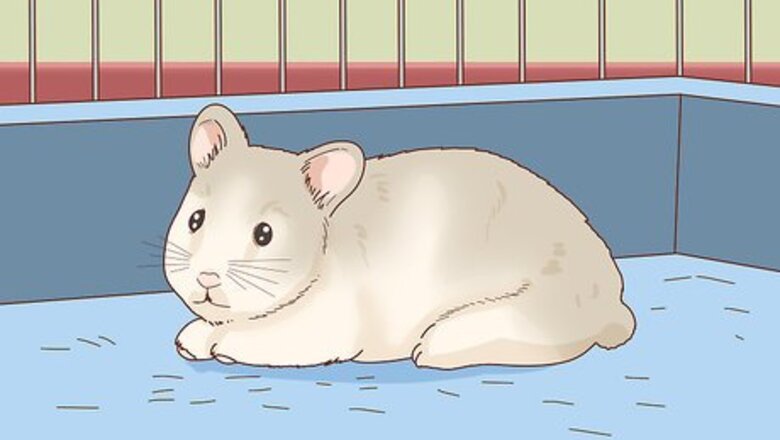
views
Training Your Hamster with Food
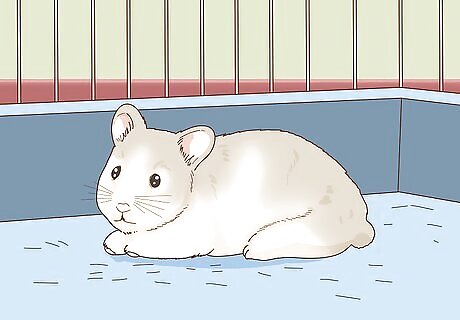
Give your hamster a couple days to settle if it’s newly adopted. Your hamster will probably be scared when you first bring it home. When it’s scared, it will be too distracted to learn any new tricks. After a couple of days at home, your hamster should be calmed down enough to start training. Tip: If you’re still deciding on a name for your hamster, try choosing something short and simple since it will be easier for your hamster to learn. For example, a name like “Ruby” would be easier for your hamster to learn than a name like “King Charles.”
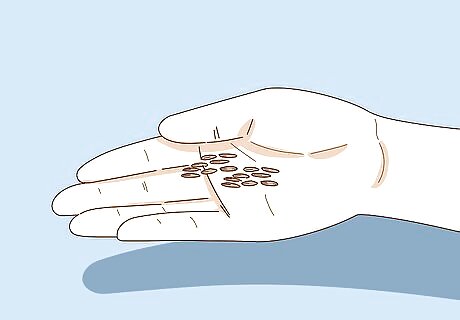
Get some healthy treats to train your hamster with. Treats are what you’ll use to motivate your hamster to come when called. You can use store-bought hamster treats or sunflower seeds. You can also use small pieces of fresh fruits or vegetables, like sweet potatoes, peaches, strawberries, and broccoli. If you use fruits or vegetables, make sure they’re not toxic to hamsters. Foods that are toxic to hamsters include apple seeds and skins, grape seeds, fruit pits, peanuts, almonds, onions, eggplant, garlic, and chocolate.
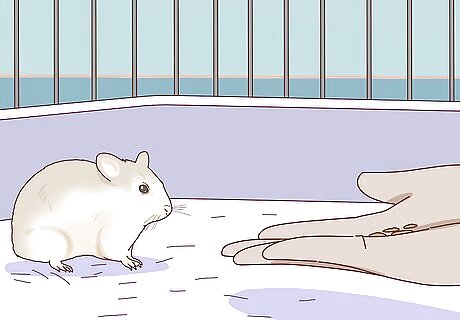
Hold a treat in your hand near the entrance of your hamster’s cage. Open your hamster’s cage first so it can get to your hand. If your hamster lives in a glass enclosure, reach your hand in from the top and place it on the bottom of the tank. If your hamster is sleeping, you might want to wait until it’s awake before training it. It might not wake up for the treat, and you shouldn’t force it awake since you could scare it.

Call your hamster’s name while you wait for it to come grab the treat. By calling your hamster’s name while offering it a treat, you’ll help it start to associate hearing its name with getting rewards. Try to keep your voice down when you talk to your hamster so you don't startle it. If you talk too loudly, your hamster might be too afraid to approach your hand.Did you know? Hamsters can't really learn or understand their names like humans do, but they can recognize sounds. By consistently using your hamster's name, it will eventually recognize the sound you're making and associate it with positive things, like treats.
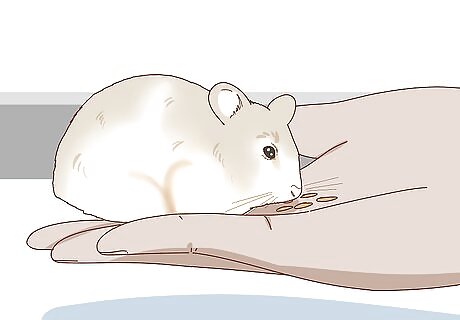
Let your hamster eat the treat out of your hand. Say its name again as it’s eating the treat to reinforce the connection between rewards and the sound of its name. Don’t grab your hamster while it’s eating the treat or you could scare it, which will make training it more difficult. If your hamster doesn’t seem interested in the treat, try again later, or give it some more time to settle into its new home and get used to you.

Repeat the process several times a day until you don’t need treats anymore. Over time, with consistent training, your hamster will learn that it will get a treat if it comes to you when you call its name. The key is to be consistent and train your hamster every day. Once your hamster starts responding to its name, try gradually reducing how often you give it treats. For example, once your hamster starts consistently coming to your hand to grab the treat when you call its name, try calling its name without holding out a treat to see if it still comes to you. If it does, you can start cutting back on how often you reward it. It might take a few weeks for your hamster to come when called, so don’t get discouraged if your hamster doesn’t seem to be learning its name. Just keep practicing every day, and eventually it will learn!
Using a Clicker
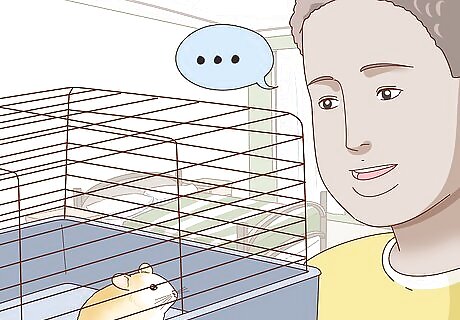
Let your hamster settle in for a couple days if you just got it. When you first bring your hamster home, it will probably be scared of its new environment. You’ll have a hard time training your hamster during this time since it will be so distracted, so give it a couple of days to get used to its new surroundings first. Avoid holding your hamster or taking it out of its cage during this time. Let it relax in its cage and do its own thing.

Get a clicker and some healthy treats for your training sessions. A clicker is a small, simple training device that makes a clicking sound when you press a button. When your hamster does something right (in this case, coming when called), you can use the clicker to make a sound before you give it a treat. Over time, your hamster will start to associate the sound with treats and the good behavior, making it easier to train. You can buy a clicker online or at your local pet store. You can use store-bought hamster treats, sunflower seeds, or fruits and vegetables. Just avoid apple seeds and skins, grape seeds, fruit pits, peanuts, almonds, onions, eggplant, garlic, and chocolate since they're toxic to hamsters.Tip: If you don’t want to buy a clicker, you can use a retractable pen instead. When you press the button on the end, it will make a clicking sound similar to the noise a real clicker would make.

Place your hamster in an enclosed training area. You can use a cardboard box, a hamster pen, or even a bathtub. If you use a bathtub, make sure you plug the drain so your hamster can’t get into it. You want the training area to be empty so your hamster doesn’t get distracted. Avoid putting toys or any other distractions in there.
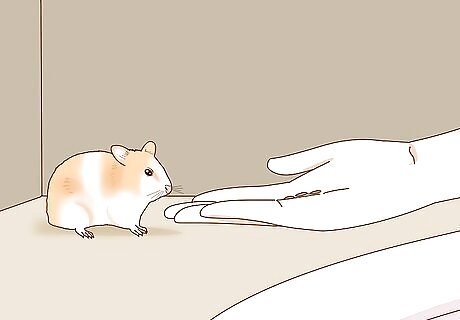
Click and reward your hamster with a treat whenever it moves toward you. Don’t worry about calling your hamster’s name just yet. At first, you just want to teach your hamster that it will hear a clicking sound and get a treat whenever it moves in your direction. Keep doing this until your hamster starts coming toward you intentionally to get more treats. If you’re not sure whether your hamster is coming toward you intentionally, try getting up and moving to a different side of the training area. If your hamster changes directions and starts coming toward you, you’ll know the training is working. If your hamster doesn’t seem to be moving toward you intentionally, keep clicking and rewarding it whenever it moves in your direction. Eventually, it should start coming toward you for more treats.

Start saying your hamster’s name when you click and give it a treat. That way, your hamster will start to associate hearing its name with getting treats. Make sure your hamster is coming toward you before you click, say its name, and give it a treat. Otherwise, it won’t associate the behavior with the rewards. Don’t click and reward your hamster if it’s moving away from you or standing still. If you do, you’ll teach your hamster to associate running away and sitting with rewards, which will make your training harder.
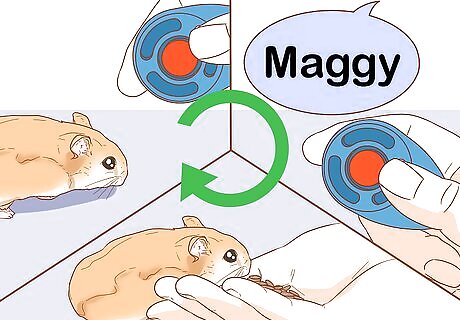
Repeat the process over the course of a few training sessions. During each session, continue to say your hamster’s name, click, and give it a treat whenever it moves toward you. Do this about 50 times before moving on with your training so your hamster learns its name. Hamsters have short attention spans, so try to keep your training sessions to just a few minutes. Then, give your hamster a break between sessions, and wait until later that day or the next day to train some more.
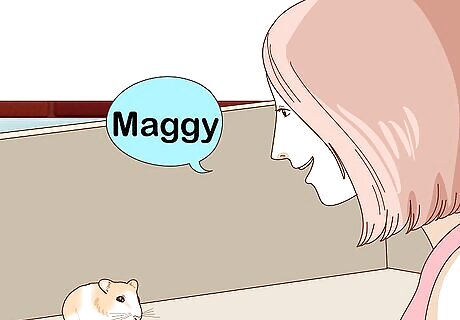
Try saying your hamster’s name before it starts moving toward you. Now that your hamster is familiar with its name (and it associates its name with getting delicious treats), it should come to you when you call. If it responds to its name and comes toward you, click and give it a treat. If it doesn’t, continue training your hamster in short sessions until it gets the hang of it. It might take some hamsters longer than others to learn their name. Don’t get discouraged if your hamster doesn’t respond when you call. If you keep training your hamster, it will learn its name over time.

Start gradually reducing how often you click and reward your hamster. Then, eventually, you won’t have to use the clicker or treats at all. However, to prevent your hamster from forgetting its training, make sure you take away the clicker and treats gradually so it can adjust. For example, you could start by not using the clicker and treats every third time you call your hamster. Then, you could stop using them every other time. From there, you could start only using them once every three times you call your hamster, and so on until you're not using them at all.














Comments
0 comment